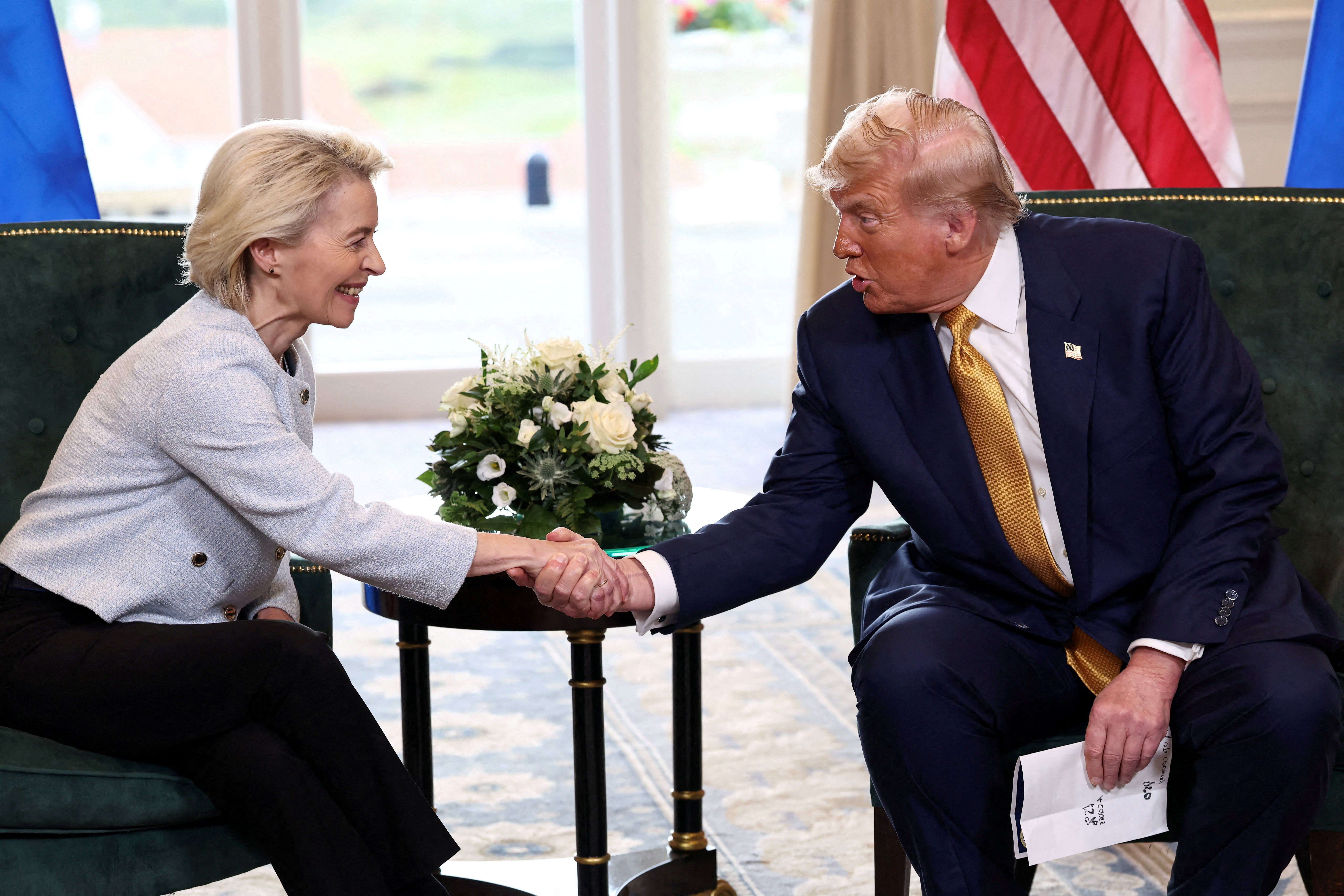It’s down the wire for countries trying to reach a trade deal with the US before Aug. 1, when President Donald Trump has threatened steep “reciprocal” tariffs. But on Sunday, the United States and the European Union reached a sweeping – and preliminary – agreement that sets new rules for the world’s largest bilateral trade relationship, avoiding a transatlantic trade war that many feared could rattle the global economy.
Trump announced the deal on Sunday after meeting with European Commission President Ursula von der Leyen at his Turnberry golf resort in Scotland, just days before 30% tariffs were set to take effect. “It’s the biggest of all the deals,” Trump said. Von der Leyen called the pact, which affects the world’s largest bilateral trade relationship, a win for “stability” and “predictability.”
Who agreed to what? The US will impose a 15% tariff on most imports from the EU — including automobiles, a major trading category. The rates had hovered in single digits before Trump took office. The 15% rate also applies to pharmaceuticals and semiconductors, which had not previously been subject to tariffs. European steel and aluminum will still be subject to a 50% tariff rate.
In return, the EU has agreed to purchase $750 billion in US energy exports, invest $600 billion in the American economy, and not place tariffs on the US. Brussels had prepared to retaliate with levies on up to $116.2 billion in American products if talks had collapsed.
Not everyone is happy. The euro fell against the dollar on Monday morning, reflecting, in part, concerns that the deal could hurt Europe’s export sector. French Prime Minister Francois Bayrou said that the bloc “resigned itself into submission” to the US, complaints echoed by far-right leaders in France and Germany. Critics also pointed out that the UK got a better deal from Trump, going home with just a 10% tariff.
But it is good news for transatlantic ties. The deal follows months of tense back-and-forth, and according to Eurasia Group’s Europe expert Mujtaba Rahman, “should contribute to a broader stabilization of the transatlantic relationship, certainly compared to where things sat earlier in the year.” In May, Trump threatened to impose 50% tariffs on nearly all EU goods, later reducing that to 30%.
“The EU and US have now struck deals on NATO and trade; the only real issue that remains outstanding is the question of Ukraine,” says Rahman.
What’s next: The final 15% figure mirrors a pact the US recently reached with Japan — and may now become Washington’s new baseline for deals with other trading partners like South Korea, Taiwan, and Switzerland, where the White House will now shift their focus before the Friday deadline.
